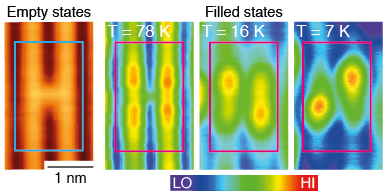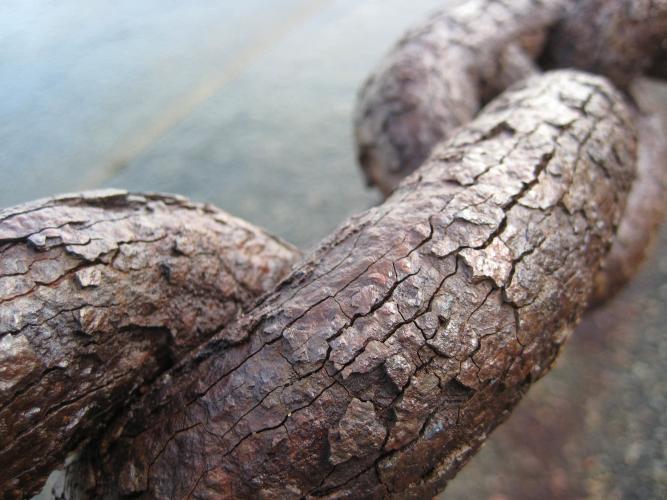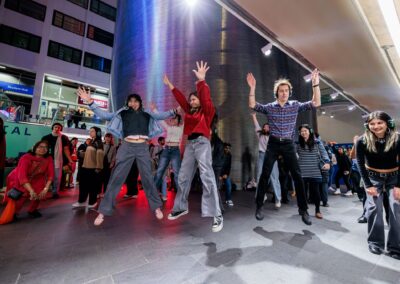Polarons in metal oxides play a key role in processes such as catalysis, high temperature superconductivity, and dielectric breakdown in nanoscale electronics. For this reason, numerous studies have been conducted on technologically relevant oxide materials in which charge carriers are believed to be self-trapped, forming polarons.
In this paper, we demonstrate that the excess electrons associated with oxygen vacancies at rutile TiO2(110) behave as small polarons.
Using scanning tunneling microscopy (STM) combined with density functional theory, we find that the electrons are symmetrically distributed around isolated vacancies at 78 K, but as the temperature is reduced, their distributions become increasingly asymmetric, confirming their polaronic nature.
By manipulating isolated vacancies with the STM tip, we also demonstrate that particular configurations of polarons are preferred for given locations of the vacancies, which we ascribe to residual electric field at the surface. Using the same tip pulses in STM, we also form a series of vacancy complexes, and manipulate the Ti ions around them, both of which change the associated polaronic distributions.
We therefore demonstrate that the configurations of polarons can be engineered, paving the way for the construction of conductive pathways relevant to resistive switching device.

Figure: Representative STM images of isolated Ob-vacs on TiO2(110) recorded using positive (empty states) and negative (filled states) sample bias at different temperatures
Original article: Engineering Polarons at a Metal Oxide Surface, Physical Review Letters, 2016



